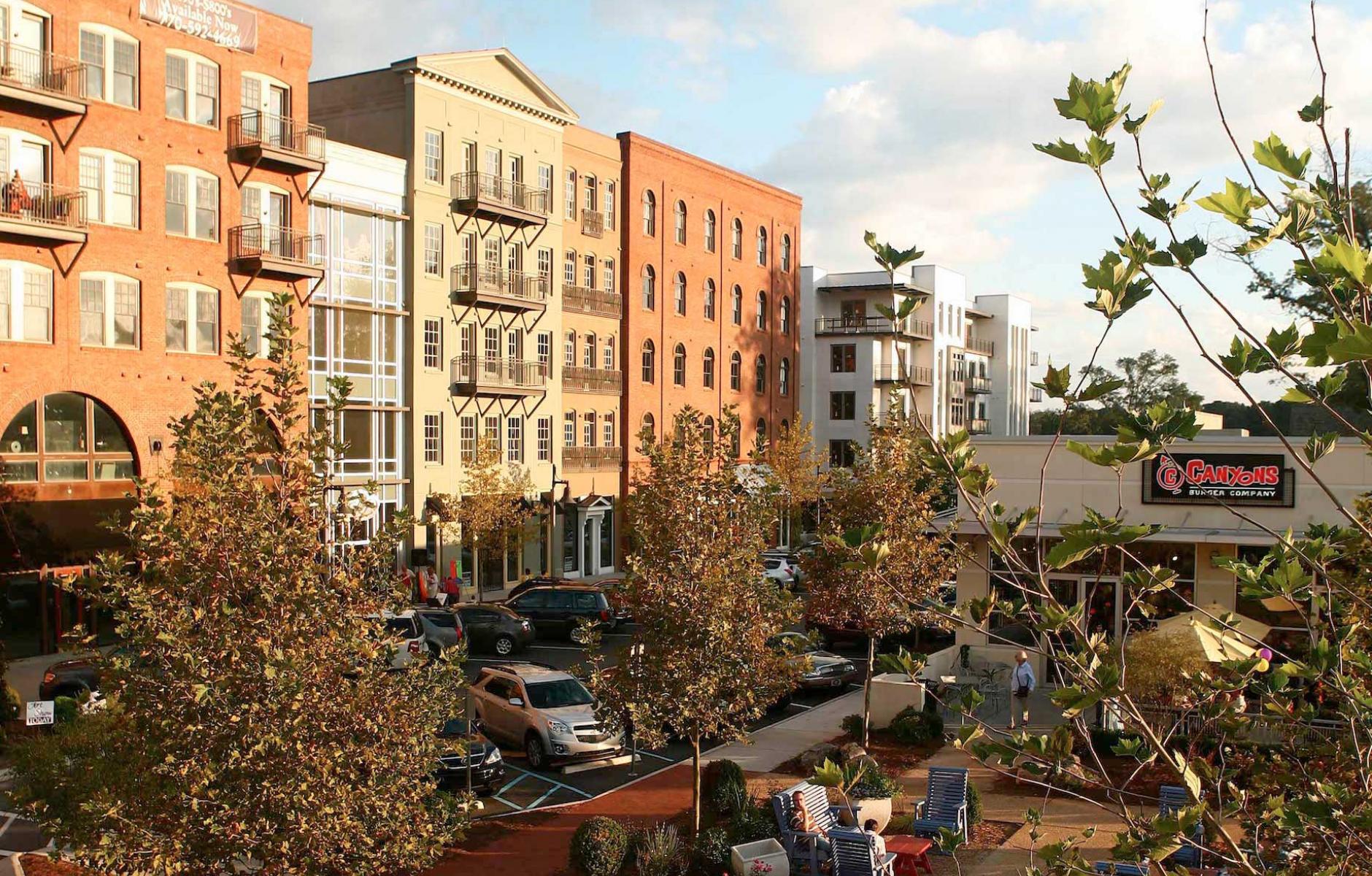
Yes, you CAN finance mixed-use development
How did Americans—people long adept at building lively, mixed-use Main Streets—allow that capacity to slip away?
One often overlooked reason is mortgage financing: Over the course of the 20th century, lenders became increasingly unwilling to write mortgages on buildings that had stores and restaurants on the ground floor and had other uses—particularly apartments—upstairs.
As the American Century wore on, loans for mixed-use buildings became hard to get. It was easier to borrow money for a one-story strip shopping center than for 2-, 3-, and 4-story buildings where people could live immediately above some of the necessities of daily life.
Now, at last, the pendulum has begun to move back toward mixed-use and its superior convenience. Not all the obstacles have been eliminated, but mortgages for mixed-use properties are becoming more widely available—which is a good thing.
One institution that’s become notably more accommodating is the Federal Home Loan Mortgage Corp.—the government-sponsored lending agency also known as Freddie Mac. In October 2014, Freddie Mac launched a “Small Balance Loan” (SBL) program, aimed at issuing mortgages of up to $5 million each on multifamily properties.
SBL is not, on its face, a mixed-use financial tool. It is a program for financing multifamily housing, part of Freddie Mac’s core mission. Nonetheless, Small Balance Loans represent a welcome liberalization in long-term financing. SBL is designed to provide fast approval of loans for projects with up 40 percent of their income—or 40 percent of their space—related to commercial uses. Even higher levels of commercial may also be approved with additional review.
Some of the properties financed by SBL are old urban buildings containing apartments with rents low enough that working-class and service-class people can afford them. The ability to finance older buildings is a piece of the housing puzzle, especially important to affordability.
SBL, it should be noted, does not provide construction financing. That must be obtained from some other source, such as a local bank. But, says Ward Davis, president of the National Town Builders Association: “The fact that Freddie Mac now offers viable mixed-use take-out financing makes local banks more likely to provide construction financing for mixed-use projects.”
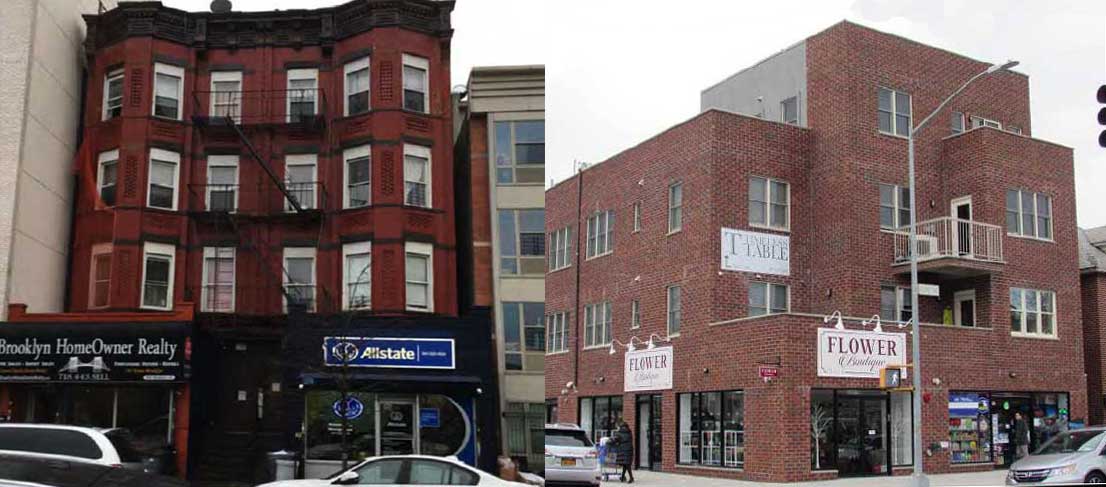
The central task of Freddie Mac is to buy conforming mortgages and assemble them into securities that can be sold to investors. SBL basically doubled the amount of commercial use that a project could have. Enabling mixed-use to participate in “securitization” means potentially massive expansion of mixed-use finance opportunities, and better terms for construction loans.
Freddie Mac staff has promoted SBL at gatherings of New Urbanist developers. At CNU 25 in Seattle in May, Ben Schweitzer, underwriting director for Small Balance Loans, led a well-attended session entitled “You CAN Finance New Urban!” The session was organized by Richard Oram, chairman of the Oram Foundation, who took an interest in this topic after the 2008 financial crisis. He explains: “I was fascinated by the contrasts of our stated housing goals and housing finance practice. Were suburbs really created by a love affair with cars? No, suburbs were financed; older areas were defined as non-conforming. While SBL is an exciting advance, many more are needed with HUD, FHA, Fannie, and in Congress.”
The SBL program has grown fast. From its initial $3-$5 million caps, the maximum SBL regular market loan has been increased to $6 million, and in higher-cost markets it is $7.5 million. Lending has risen rapidly. In 2015, $2.3 billion in loans were issued. Last year, $3.7 billion in loans were granted, and growth continues to be robust. The agency expects to issue $5 billion or more of SBL loans in all of 2017. Steve Johnson, vice president of the program, describes SBL as “a tremendous success.”
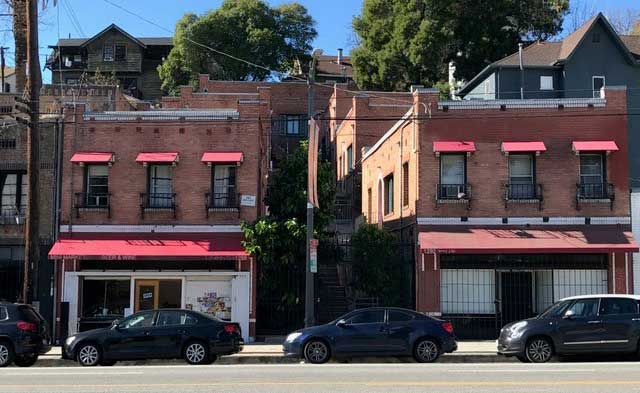
The long struggle for financing
New Urbanists have long complained that conventional zoning and transportation engineering make compact, pedestrian-oriented development difficult. The difficulties posed by the American finance apparatus have received less attention—though that’s been changing recently.
Oram Foundation supported work on this topic by the Regional Plan Association (RPA). “The Unintended Consequences of Housing Finance,” a February 2016 RPA report by Christopher Jones and Sarah Serpas, states that rules hindering financing for mixed-use development “had their genesis during the Great Depression or early post war era, and are based on the obsolete assumption that mixed-use developments are financially riskier than single-purpose residential developments.”
John Norquist, CNU president from 2004 to 2014, traces the problem back even further. “One of the last expressions of the Progressive movement before it died,” Norquist says, “was that they came out against density in cities and in favor of separation of uses.” Herbert Hoover, commerce secretary under President Calvin Coolidge in the 1920s, incorporated the Progressives’ distrust of densely packed cities into emerging government policy.
Norquist says that when the Federal Housing Authority was established as part of President Franklin Roosevelt’s New Deal in 1934, the New Deal “picked up all that coding.” The aversion to density and mixed-use was perpetuated by later administrations, both Democratic and Republican. Decades later, the financial bias against mixed-use development was entrenched, and only a few individuals knew how it came about.
“I started to raise this issue when I was mayor [of Milwaukee from 1988 to 2004] because I thought it was hurting taxpayers on the commercial streets,” Norquist says. “I couldn’t get anywhere with the US Conference of Mayors,” he says, “because they’re dedicated to begging the federal government for more money—which they almost never get.”
After the founding of CNU in the early 1990s, appreciation of mixed-use development increased. “Wall Street people and Peter Calthorpe understood it,” says Norquist. “We made a little bit of progress.” In recent years, the National Town Builders Association (NTBA) has been one of the groups continuing to advocate mixed-use development financing. Among lending institutions, “Freddie Mac is the most progressive on this stuff,” Norquist says.
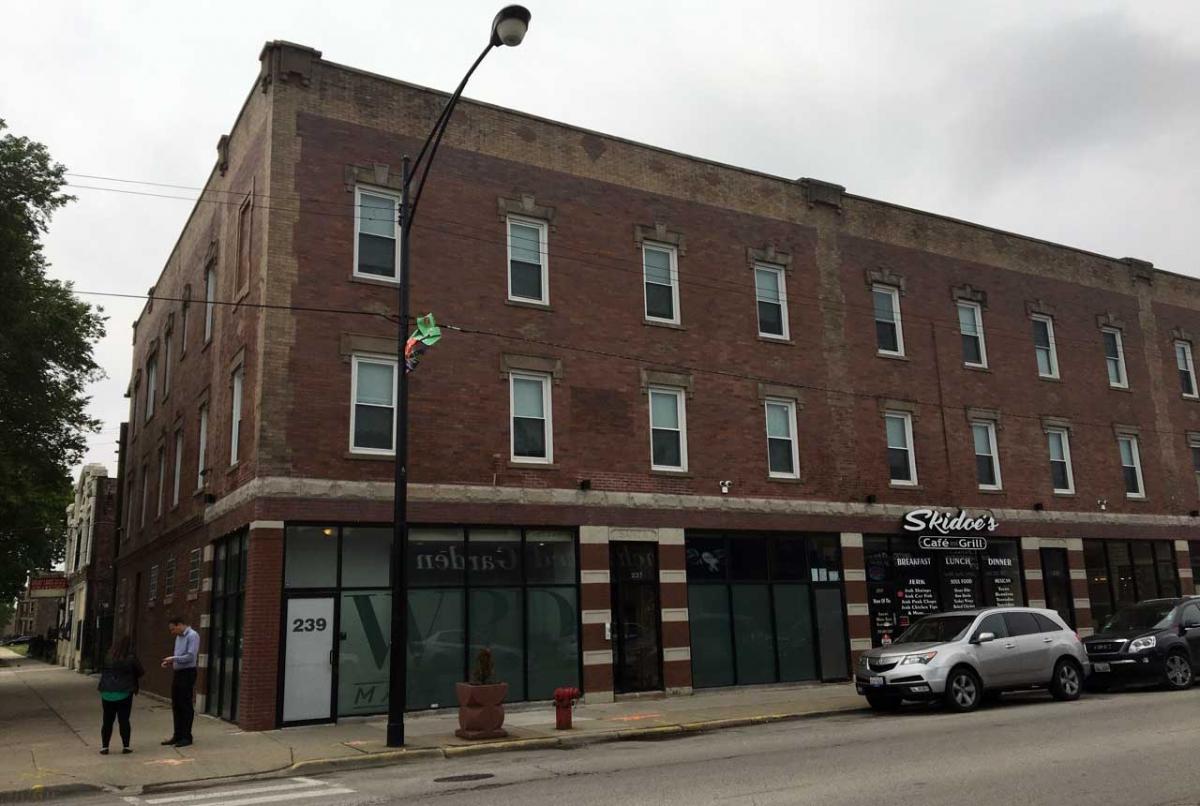
What’s risky and what’s safe?
For years, it was assumed that mixed-use projects presented greater risks than single-use development. Recent research, however, as noted in RPA’s report, “indicates that single-use projects may actually be riskier than ones with higher shares of non-residential uses.”
A mixed-use building or mixed-use neighborhood is generally more convenient for people, and in some ways more economical. This may bring greater financial stability. “I see mixed-use development as a risk mitigant,” says Keaton Smith, a loan officer and vice president at Iberia Bank’s office in Fayetteville, Arkansas. “I believe demographics and market preferences are moving in the direction of connectivity and walkability.”
Many young people—and many empty-nesters as well—are gravitating to neighborhoods and downtowns where restaurants, taverns, coffeehouses, theaters, and other amenities are nearby. In a walkable, mixed-use location, a developer may not have to create so many on-site amenities, Smith says. “You have the amenities down the street—the bar, the restaurant, the farmers’ market on Saturday.” Consequently, a building in a mixed setting may in some respects be less costly to build and operate.
Where Loans Are Being Made
The easiest place to get an SBL loan is in the thickly populated core of a major metropolitan area. “We are able to be quicker and more efficient in urban markets,” Schweitzer explains. The terms offered in these cores—called “Top Markets” by Freddie Mac—are especially attractive.
Brooklyn, New York, has received “lots of SBL loans,” Schweitzer says. Many of those properties contain bodegas at street level and rental apartments above, and much of the housing is affordable. “Workforce housing” is a Freddie Mac priority. Buildings financed through SBL tend to be “slightly older, less updated, less amenitized,” Schweitzer says. They are typically Class B and C buildings. These buildings have the further advantage of being “less susceptible to market turns,” Schweitzer says. The owners of these buildings, often “smaller, less sophisticated” borrowers, stand a good chance of being local—owners with a connection to place, which is seen as a plus. The program is designed for properties with 5 to 150 housing units; the average is 45.
Though more than half the SBL loans are made in the dense cores of populous metropolitan areas, smaller places are not excluded. “We are working on two buildings that are likely candidates for SBL,” says Davis, principal of High Street Real Estate & Development in Springdale, Arkansas, near Fayetteville. Both buildings being planned by High Street are in Johnson Square, a walkable 80-acre downtown that the firm is developing in Johnson, a town of about 4,000 near Fayetteville.
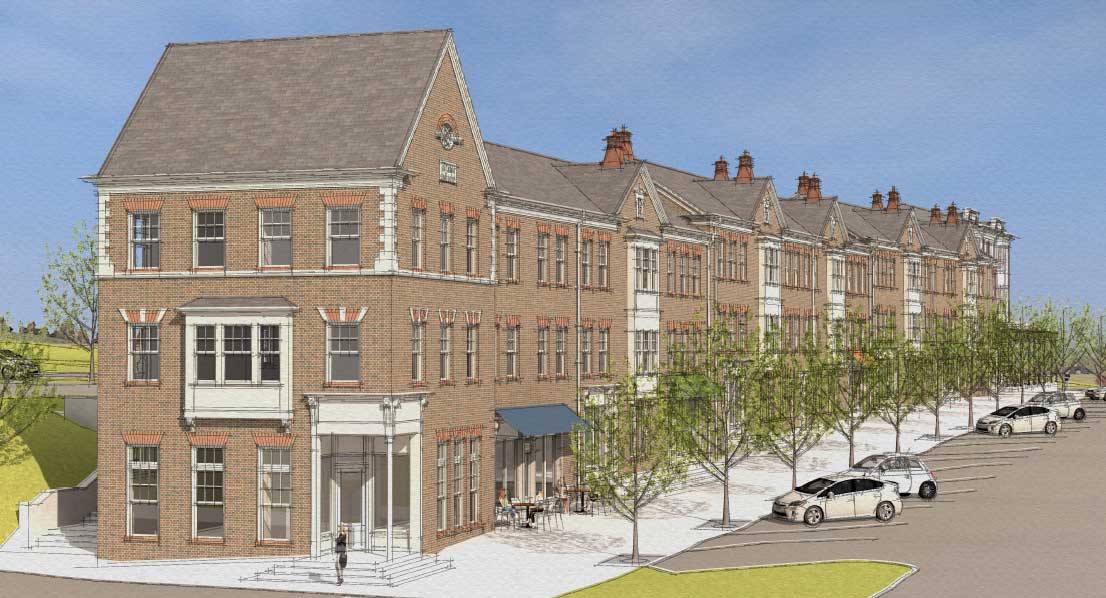
The larger of the two is a roughly $4 million, 30,000 sq. ft. building that will have 25 apartments plus 8,200 sq. ft. of commercial space. The smaller is an approximately $2 million, 13,500 sq. ft. building that will have nine apartments and 3,600 sq. ft. of commercial. Davis expects that the two buildings’ permanent financing will come either from Freddie’s SBL program or from a life insurance company. Both sources, he explains, “provide long amortizations and very long terms, which are important because today’s interest rates are so attractive.” Freddie will probably win out, he says, “because you can finance at stabilization based on loan-to-value (vs. loan-to-cost), which life companies are reluctant to do.” (“Stabilization” refers to having 85 to 90 percent of the units occupied and generating steady rents.)
NTBA member Grant Humphreys is looking into obtaining SBL financing for a 14-unit apartment project with two small retail bays in the town center of Carlton Landing, a 1,650-acre project he’s developing along Lake Eufaula in rural Oklahoma. “Last October, in Oklahoma City and at Carlton Landing,” Humphreys says, “NTBA hosted Corey Aber [Freddie Mac business design manager] for a developers roundtable.”
A look at the alternatives
The Federal National Mortgage Agency (Fannie Mae) offers a Small Apartment Loan (SAL) program that Moses Gates, an RPA staff member, says “can help to revitalize 4-story buildings, and can even help with three-story buildings, if affordable housing or important community services are part of the deal.” Loans can be as high as $3 million. In costly markets, the limit is $5 million.
For developers of properties with 4 housing units or fewer, R. John Anderson, a developer who organized the not-for-profit Incremental Development Alliance, recommends the FHA 203(b) standard 30 year mortgage or the typical Fannie Mae or Freddie Mac 30 year mortgages.
“These are not some exotic loan programs,” Anderson wrote on his “Plain talk on building and development” blog in July 2015. “It is a fixer-upper loan on a 1- to 4-unit dwelling. If you pay attention to the particulars of the loan program, you can use it to fix a main street mixed-use building and be in a position to live in one of the units rent-free. Four or five local folks doing this within a couple blocks of each other could change the main street.”
Another FHA program, 203(k), allows mixed-use, provided that the percentage floor area devoted to commercial purposes does not exceed the following: 25 percent in a one-story building, 49 percent in a two-story building, and 33 percent in three stories.
A developer could also go to an insurance company. “Life insurance companies and pension funds are becoming direct lenders for nonrecourse financing,” Davis notes. Borrowers like nonrecourse loans because they do not give the lender the right to seize the borrower’s personal assets if the loan defaults. Davis cautions, however, that insurance companies don’t have local knowledge, so their underwriting tends to be expensive and unpredictable.
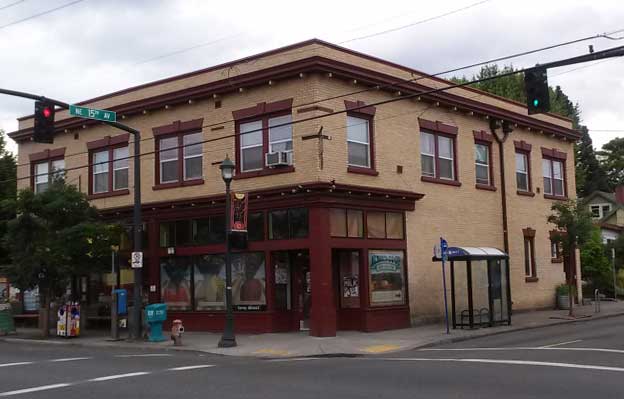
In other cases, a developer goes to a local bank. The bank will presumably have to keep the loan in its portfolio rather than resell it. “They do it as an important civic gesture, but there is a severely limited volume of these loans available,” says developer Frank Starkey in New Port Richey, Florida.
A major success of Freddie Mac’s SBL program has been its packaging of loans into securities that are sold in the secondary market. So far, the SBL program has completed 32 securitizations totaling more then $7 billion. “All of this was beyond our expectations,” says Johnson, the SBL vice president. Through securitization, the volume of lending grows much faster than it would otherwise do.
Freddie selected 11 “seller/servicers” across the country to bring in applications for SBL loans, explain the procedures, and offer rate quotes. Applicants can also go to a loan broker. Between 60 and 70 percent of the SBL business has been transacted through individual brokers. Applicants do not apply directly to Freddie.
The future
Freddie and Fannie have been under government conservatorship since the financial crisis of 2008. That has limited how much lending they can do. But because loans for affordable housing are exempt from the conservator’s restrictions, SBL has been able to grow briskly.
New Urbanists have discussed a number of strategies and tactics that could further boost financing for mixed-use development:
• Establishing within HUD a “Main Street Loan” program similar to SBL but with broader scope, via new legislation. It would be a companion to HUD’s large Section 221(d)(4) program, which doesn’t support low-rise mixed-use projects.
• Raising the maximum size of mixed-use loans from Freddie Mac and other entities.
• Raising the limits on how much commercial income or space is allowed in a property. HUD’s 221(d)(4) program limits commercial income to 15 percent of a building; this means that if a building’s ground floor is commercial, the building would need at least 7 stories to qualify, and probably more when rents are affordable.
• Eliminating the caps on the percentage of commercial income or commercial space. Underwriting, urbanists say, should focus on the creditworthiness of the applicant and the actual risks posed by the property.
• Allowing SBL to offer “forward commitment.” Generally, this means when a construction loan is obtained, the borrower-developer is assured permanent financing will be provided if the project reaches completion.
• Research and communications supporting mixed-use. One question worth investigating is whether walkable development creates jobs. If it does, this would strengthen economic and political arguments for mixed-use. Oram says, “The long-term bias against mixed use needs to be debunked, and the housing finance gospel rewritten.”
• Finding ways to publicize the SBL more vigorously. It’s believed that the conservatorship has crimped Freddie Mac’s ability to get the word out.
• Increasing the number of seller/servicers.
Meanwhile, individuals in the lending industry can make a difference. Bank loan officer Keaton Smith, when asked how much demand he sees for mixed-use development, replied: “I’m seeing a lot of demand because I hang out with the people who develop mixed-use product. I network with those people.”
When asked whether loan officers generally do that, Smith said, no, “we’re not very numerous. But it’s growing. Demographics is our strongest argument. I think demographic changes are the reason why there’s so much interest in multifamily.”




